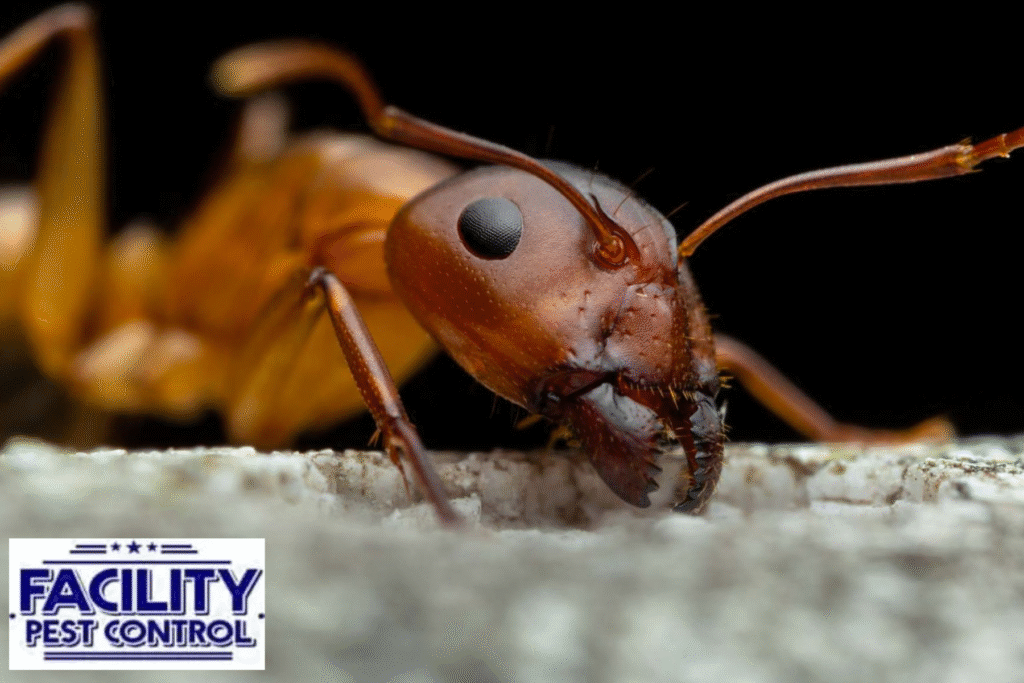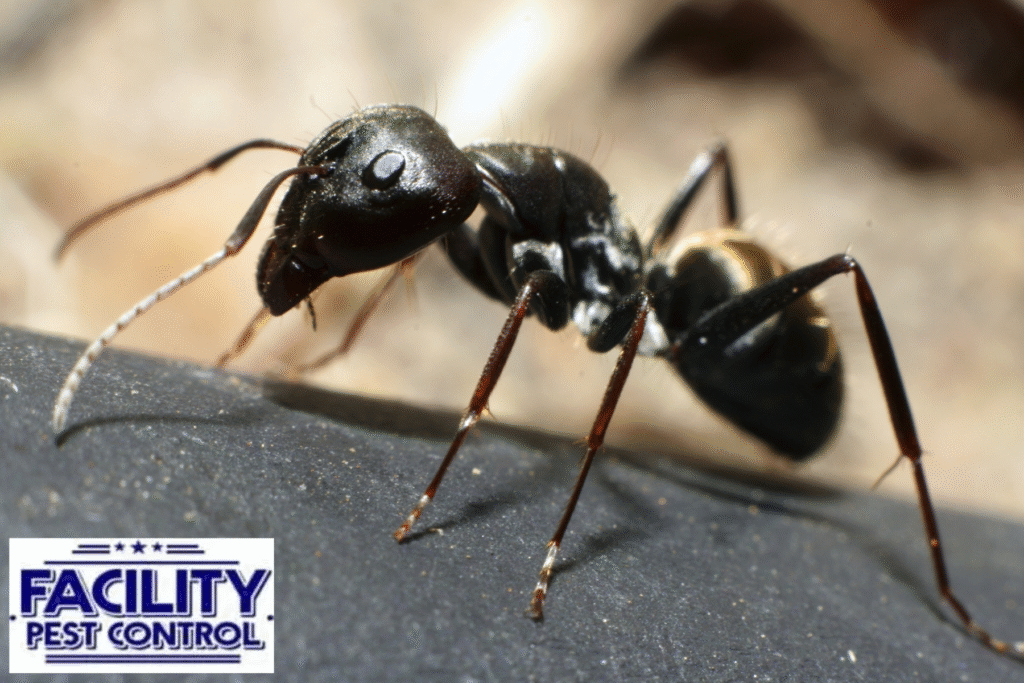Ants are one of the most persistent household pests, but spotting ant eggs in your home takes the problem to another level. These tiny white or translucent specks may seem harmless at first, but their presence is actually a major red flag one that homeowners shouldn’t ignore.
Whether you’re dealing with a small trail of ants in your kitchen or discovering clusters of ant eggs in wall voids or under appliances, this article will help you understand why they’re there, what they mean, and what you can do to eliminate them for good.
What Do Ant Eggs Look Like?
Understanding the Early Life Stage of Ants
If you’ve never seen them before, you might wonder what do ant eggs look like. These eggs are usually:
- Oval-shaped
- Translucent white to pale beige
- Tiny about 0.5 mm in length
- Clustered together in colonies
They’re often mistaken for grains of rice or dandruff, but finding them in areas like baseboards, cracks, attics, or inside kitchen cabinets is a sign of a larger issue: a nesting colony within your home.
Why Finding Ant Eggs Inside Is a Big Problem
1. It Means There’s a Colony Inside
Worker ants don’t just leave their eggs laying around. If you’ve found them, it means the queen ant is nesting somewhere nearby, and the colony is already established inside the walls, floors, or hidden crevices of your home.
A single colony can produce thousands of ants, and if conditions are right (moisture, warmth, and access to food), the colony will continue to grow.
2. You’re Dealing With a Breeding Ground
Eggs turn into larvae, which become pupae, and then develop into adult ants. This cycle happens rapidly especially in warmer climates. By the time you see foraging ants, the colony has already matured and is reproducing.
Without disrupting this life cycle, the problem will worsen. Store-bought sprays won’t reach the nest, and crushing visible ants won’t stop the next generation.
3. Different Ants = Different Risks
Some species like odorous house ants are mainly a nuisance. Others, like carpenter ants, can cause structural damage. And fire ants? They can bite and sting.
If you’ve seen ant eggs but aren’t sure of the species, it’s time to call a professional for ant control near me to identify the species and take appropriate steps before the colony expands further.
Why Ants Lay Eggs Indoors
Ants usually prefer to nest outdoors, but when they lay eggs indoors, it’s often because your home offers the perfect environment for survival and growth.
Common Triggers for Indoor Nesting:
- Access to food: Unsealed food items, crumbs, pet food, or sugary spills
- Moisture sources: Leaky pipes, clogged gutters, damp basements
- Warmth and shelter: Attics, wall voids, insulation, and under appliances
- Cracks and crevices: Entry points around doors, windows, and foundation
Even the smallest gap can allow ants to march in and set up a colony bringing the eggs, larvae, and the queen along with them.
How to Get Rid of Ant Eggs and Stop the Colony
Step 1: Don’t Just Clean Investigate
Wiping up the eggs is just the beginning. If you’ve found them, you need to find out where they came from. Track ant trails, look for other signs like frass (fine sawdust-like material), and listen for activity in walls especially with carpenter ants.
Step 2: Use Baits, Not Sprays
Ant sprays kill on contact but won’t affect the eggs or the colony. Instead, use slow-acting bait that foraging ants will carry back to the queen and nest. This is the best way to destroy the source of the infestation.
Look for the best ant control solutions tailored to your specific problem including colony-size infestations or multiple nesting sites.
Step 3: Remove Food and Water Sources
Sanitation plays a huge role in keeping ants out. Eliminate:
- Greasy residue or spills
- Crumbs in cabinets, counters, or under appliances
- Standing water in sinks or pet bowls
Ants are relentless foragers, and cutting off their access to food and water discourages nesting.
Step 4: Seal Entry Points
After you’ve treated the infestation, seal cracks and holes where ants may enter. Use caulk around windows, fix broken screens, and apply weather stripping under doors.
Working with a pest control West Hills professional ensures nothing is missed, especially hidden structural vulnerabilities that ants love to exploit.
When to Call an Exterminator
If you’ve spotted eggs in more than one area, ants in winter months, or if the infestation keeps coming back, it’s time to call a licensed exterminator West Hills CA.
Professionals have the experience, tools, and products that aren’t available over the counter. They’ll:
- Identify the species
- Locate all nesting sites
- Treat the colony and surrounding areas
- Provide long-term prevention strategies
DIY efforts can temporarily help, but when it comes to an infestation involving ant eggs and an active colony, professional help is the most efficient route.

About Facility Pest Control
Facility Pest Control is a local, family-owned company proudly serving West Hills, CA, and the surrounding areas. Our commitment to quality service and effective results has made us a go-to choice for residents who want Specialized Attention Big Business Can’t Give.
Our general pest control services include monthly, hybrid, and bi-monthly treatment plans to eliminate and prevent pests year-round. Our thorough interior and exterior treatments include:
Interior:
- Garage, attic, and baseboard treatments
- Under-sink, appliance, and plumbing treatments
- Entry point sealing
Exterior:
- De-webbing and mud dauber/wasp nest removal
- Granular yard treatment
- Foundation barrier spray
- Wall flush dusting and backpack spraying
We specialize in safe, eco-conscious products that are family- and pet-friendly. All general pest treatments are backed by a 30-day guarantee. We also offer comprehensive mosquito control, including fogging and In2Care mosquito buckets.




